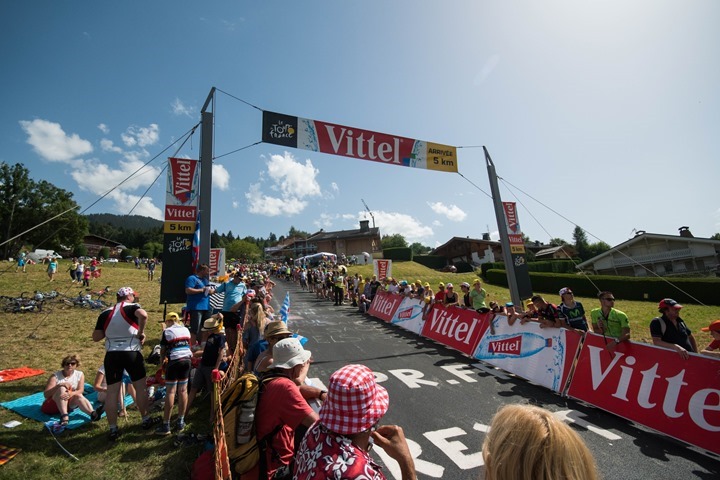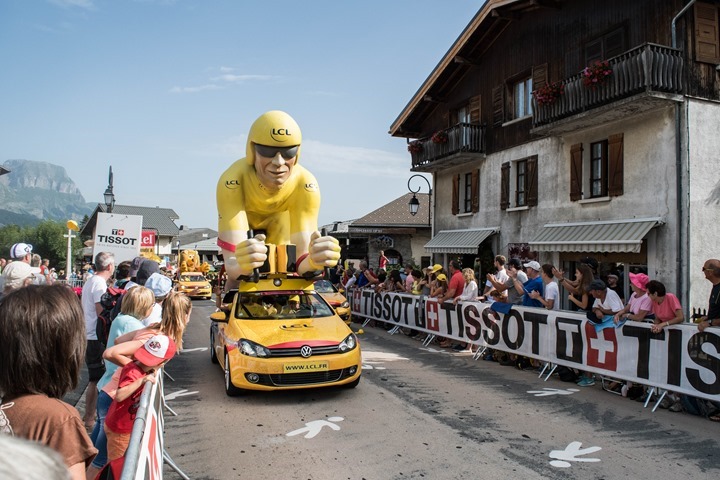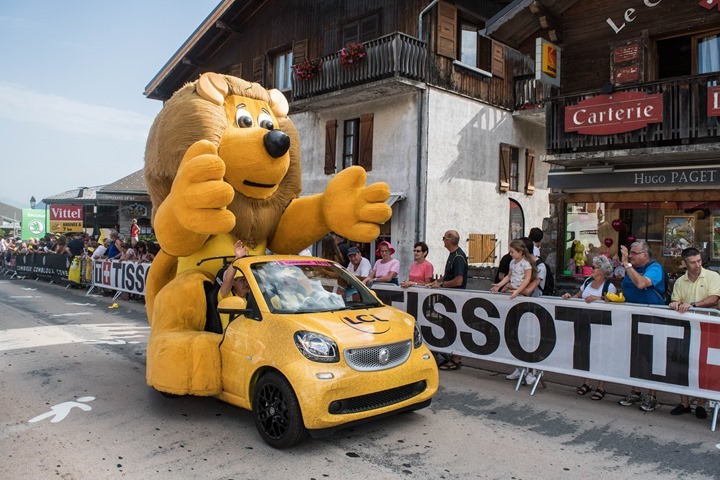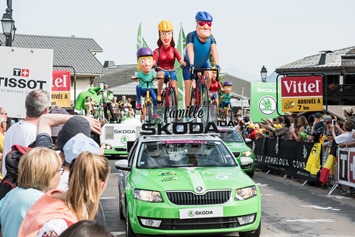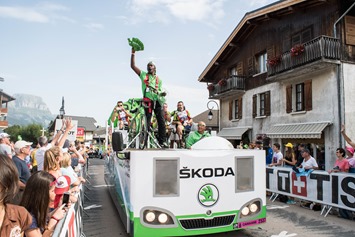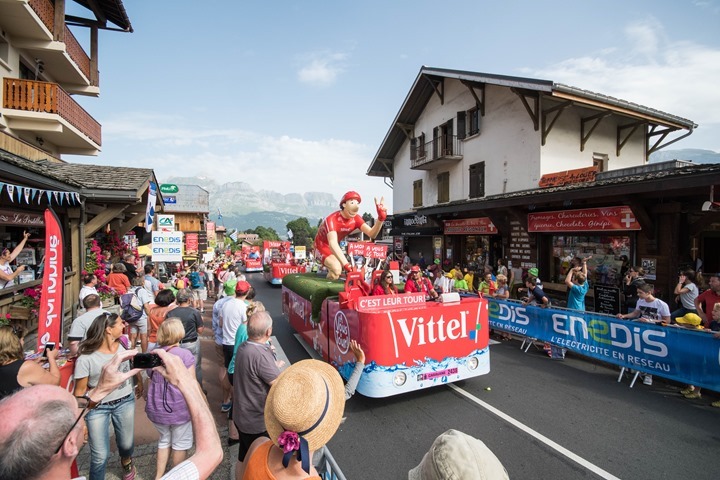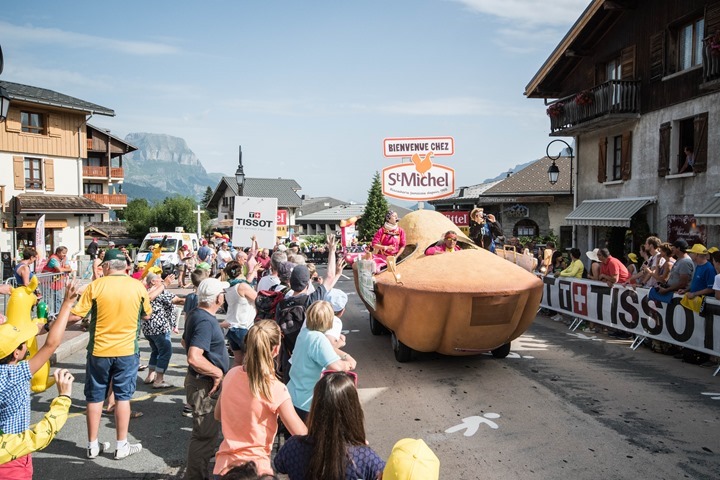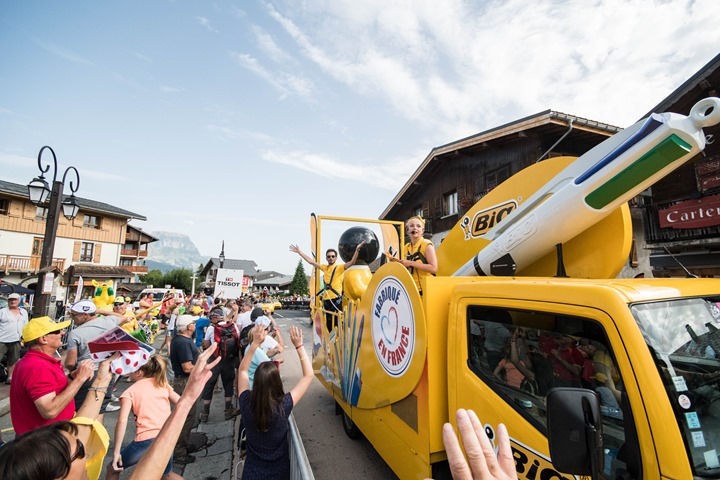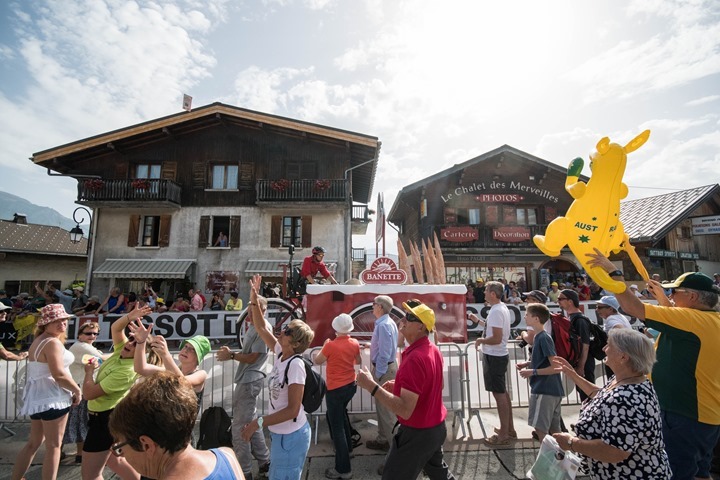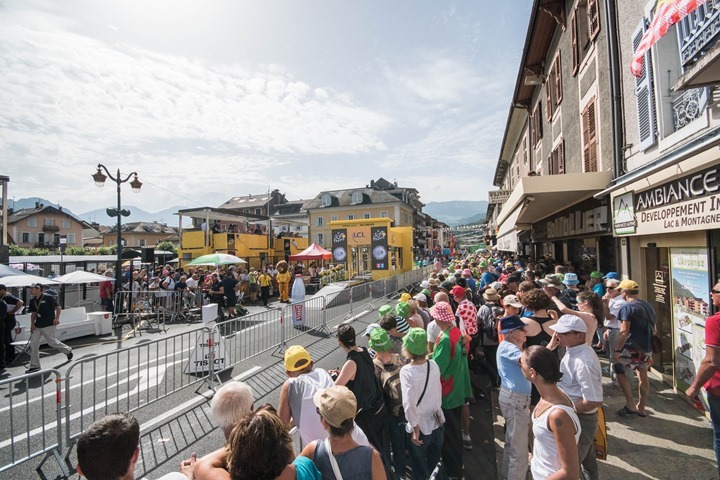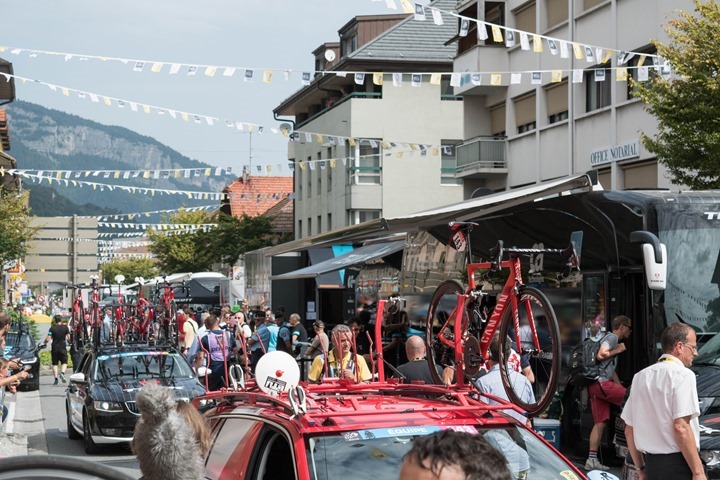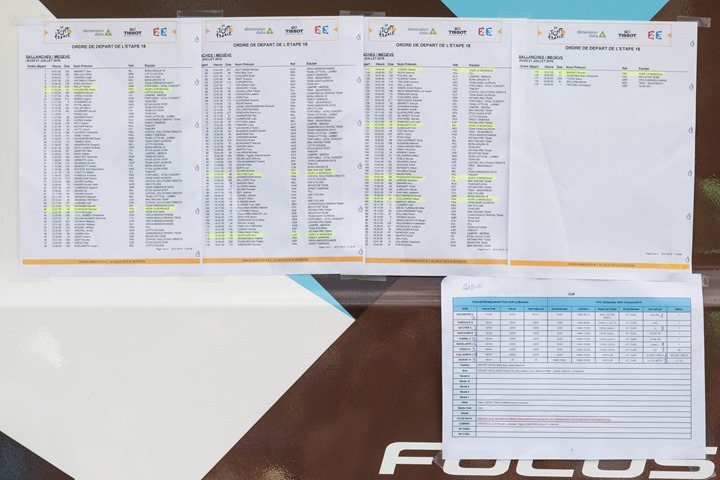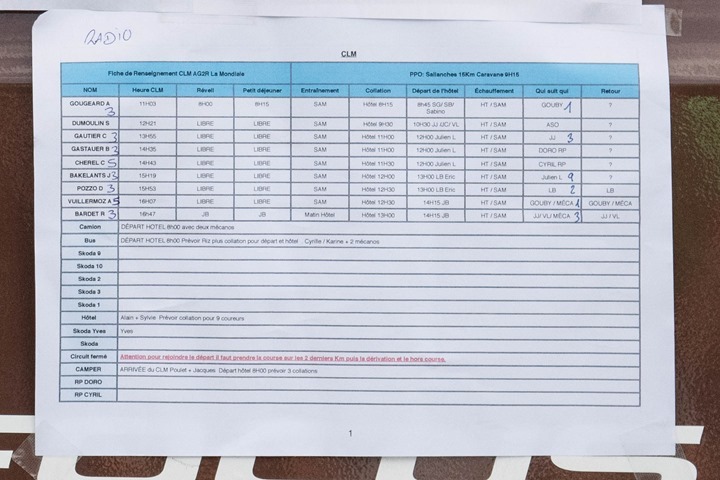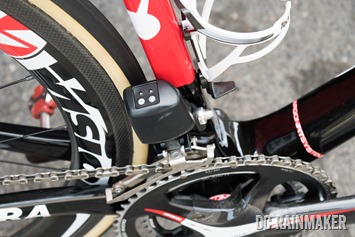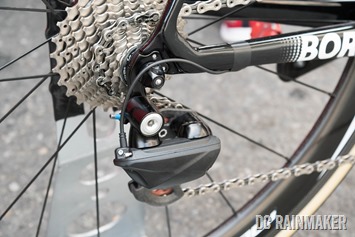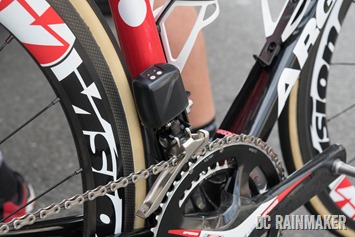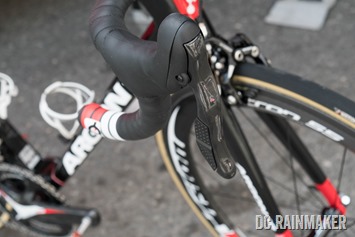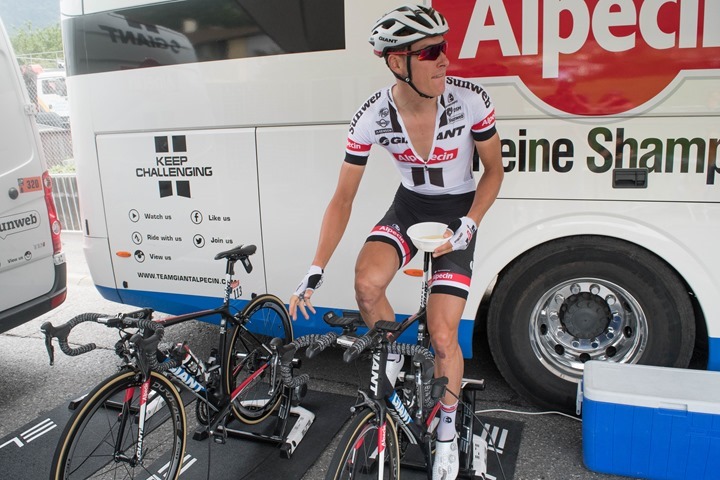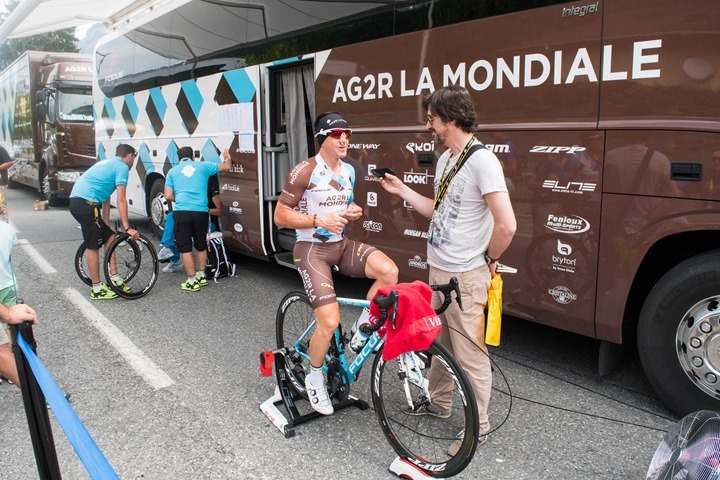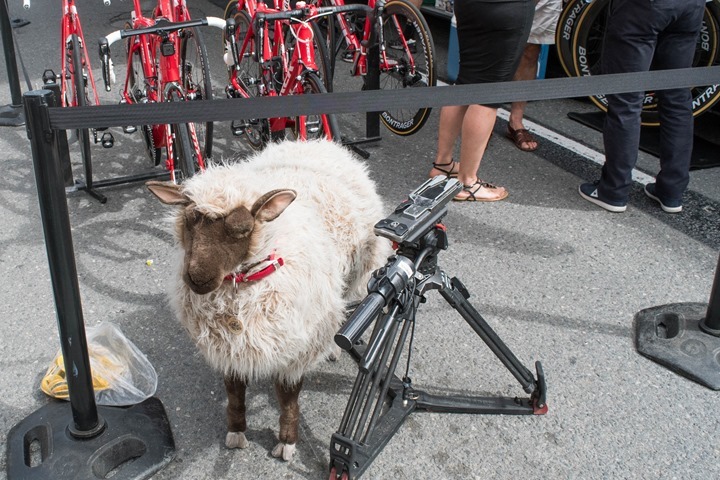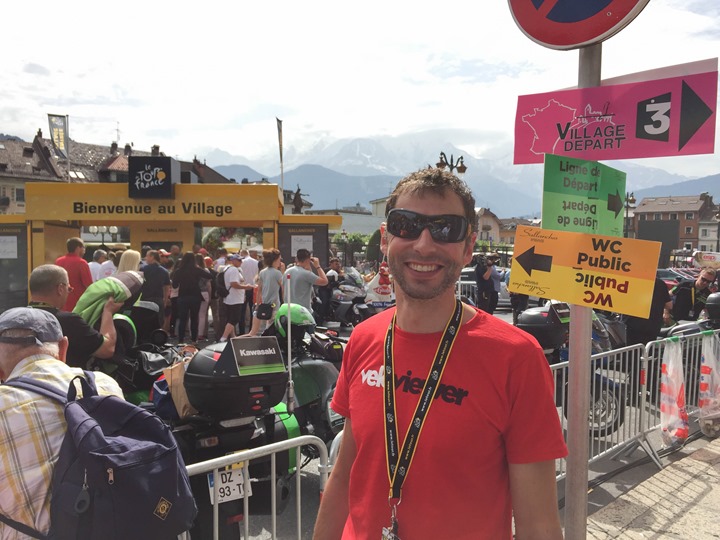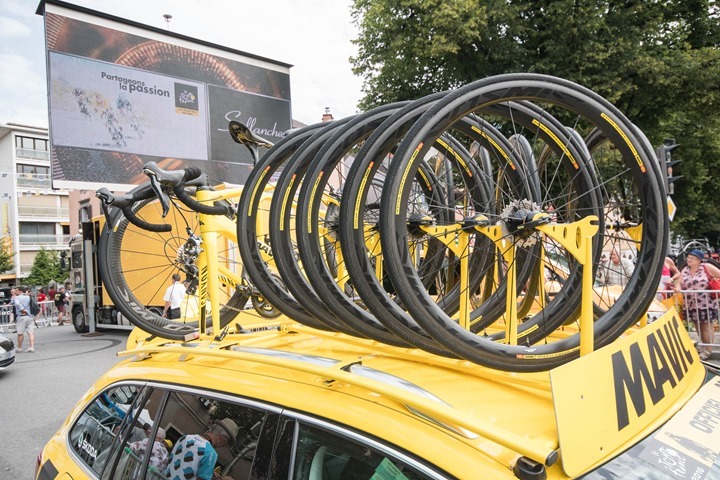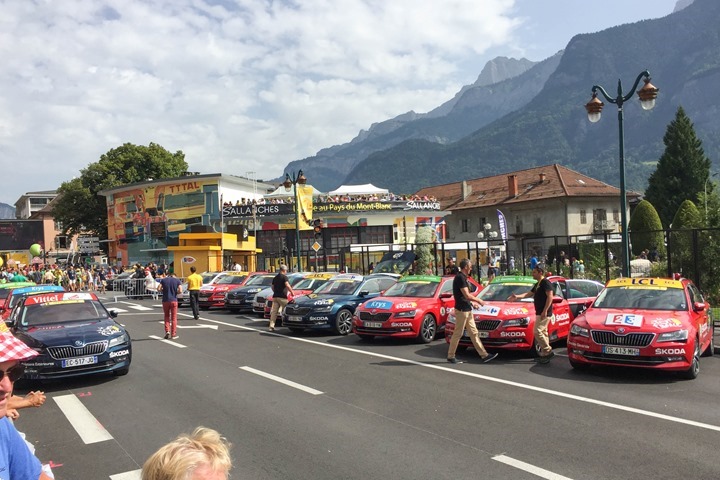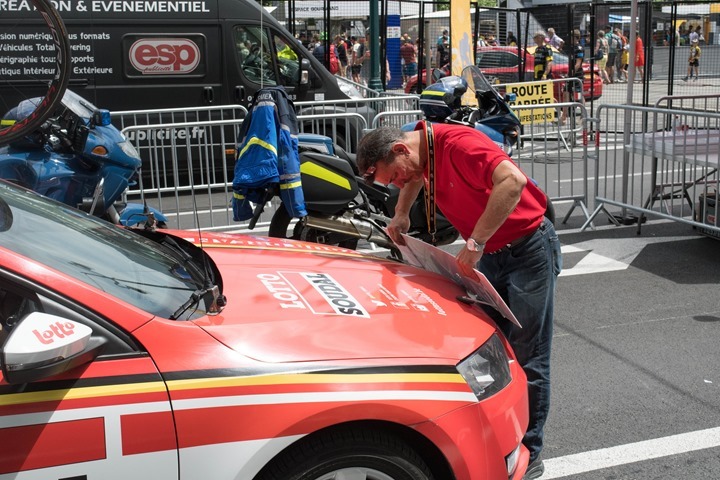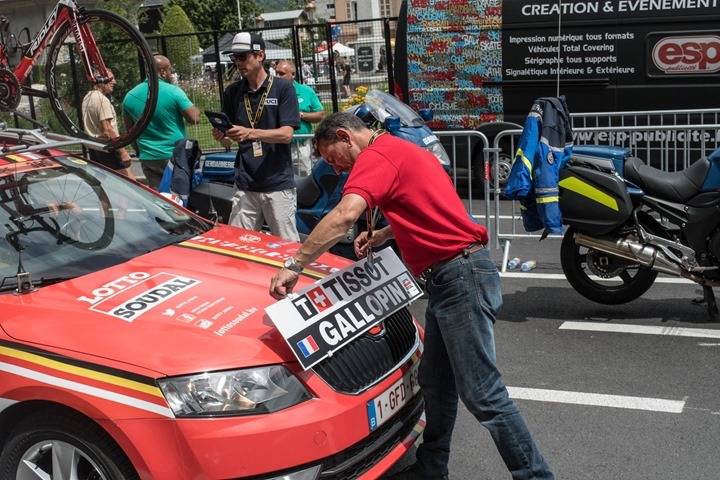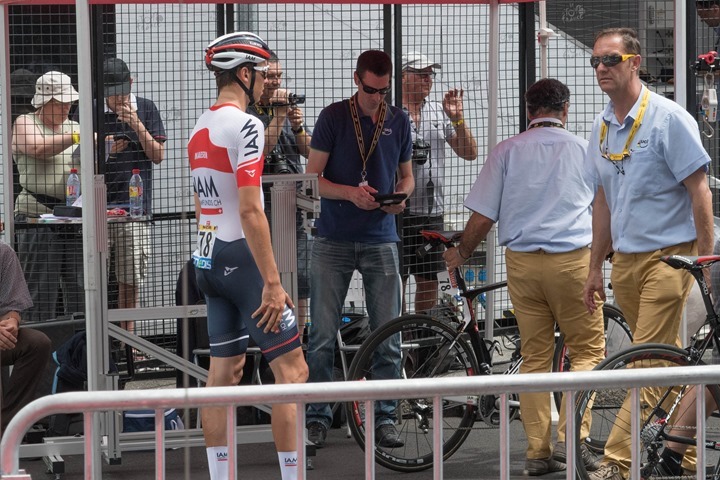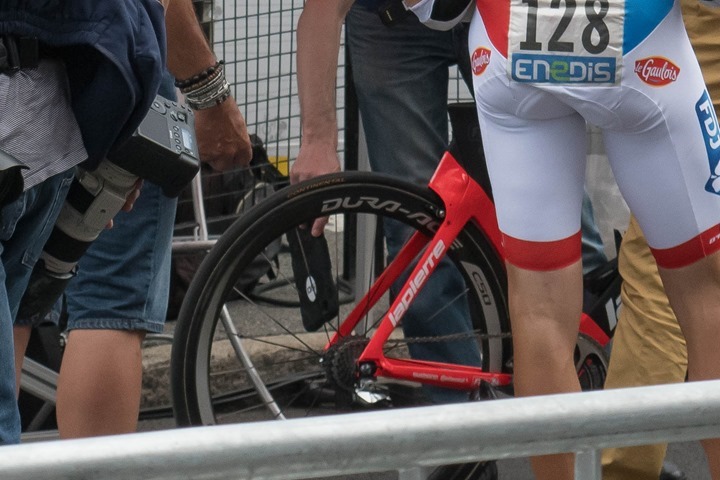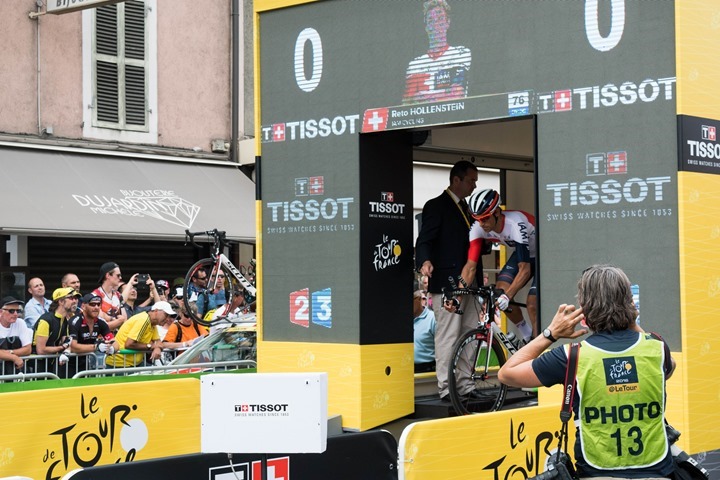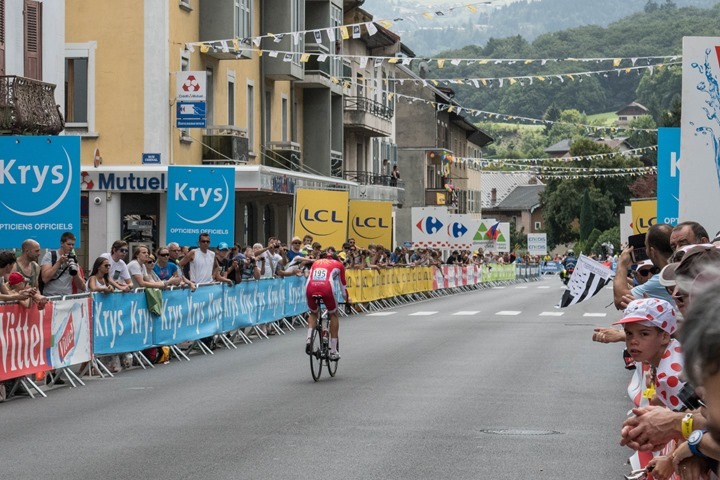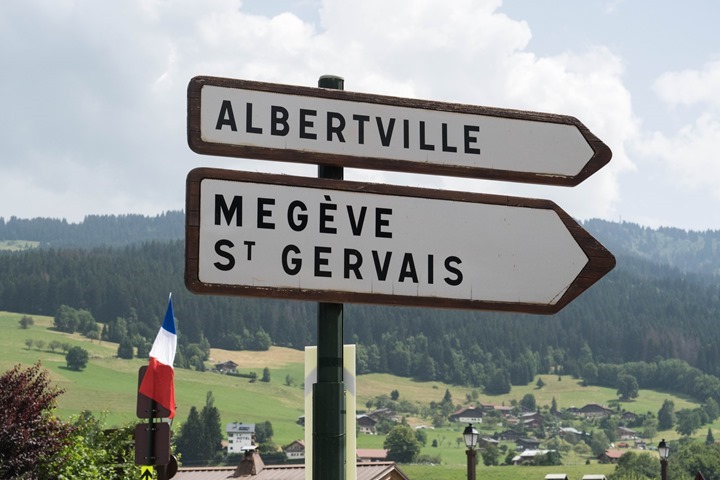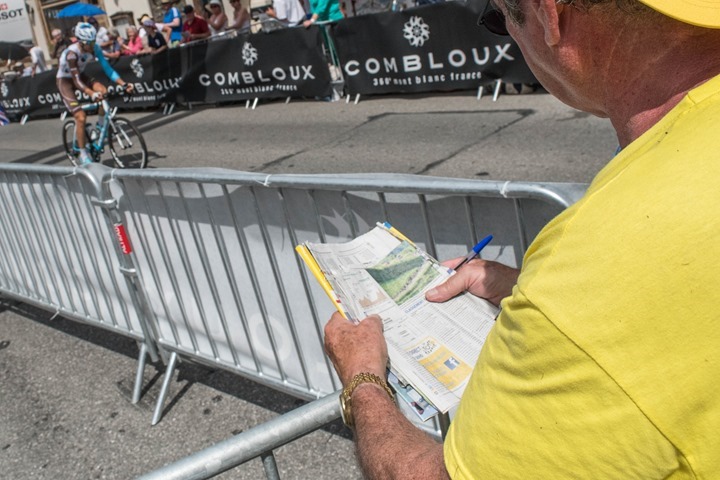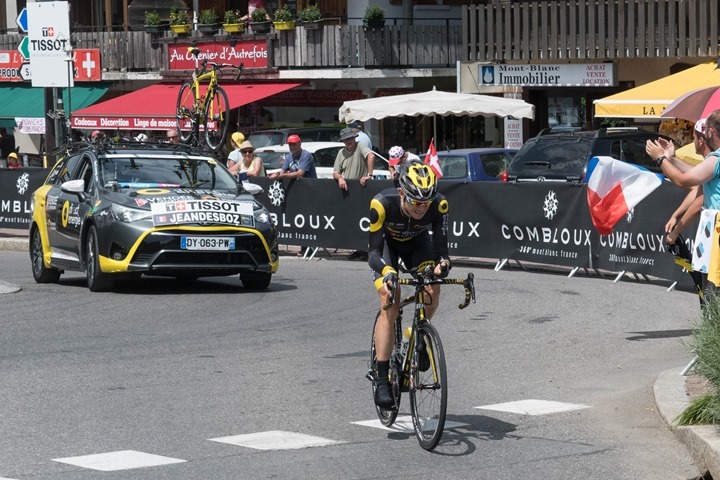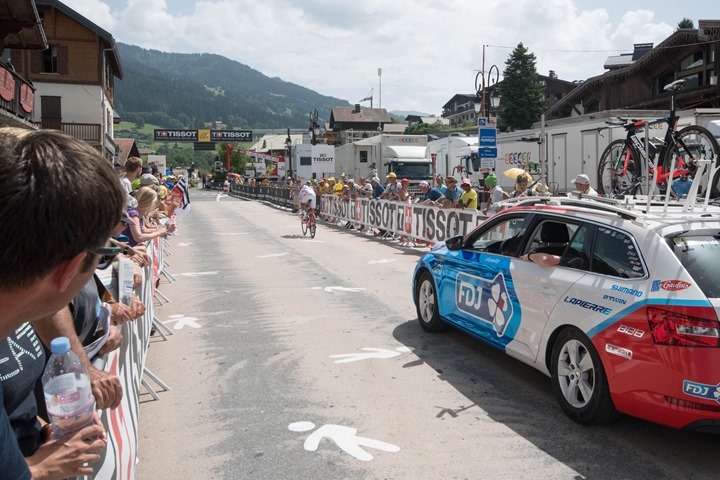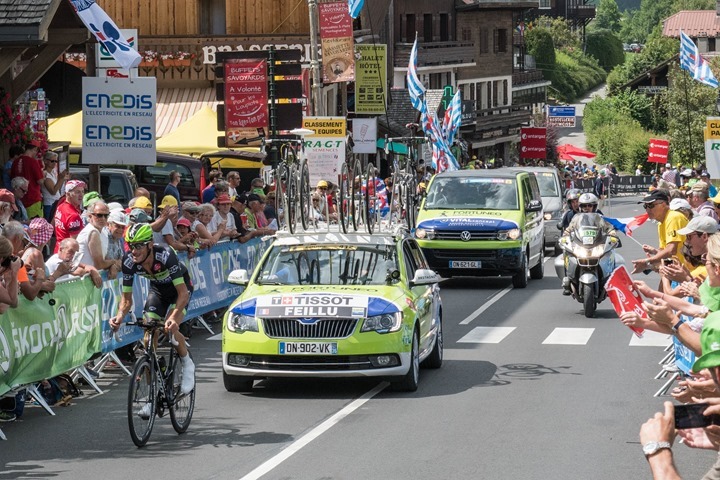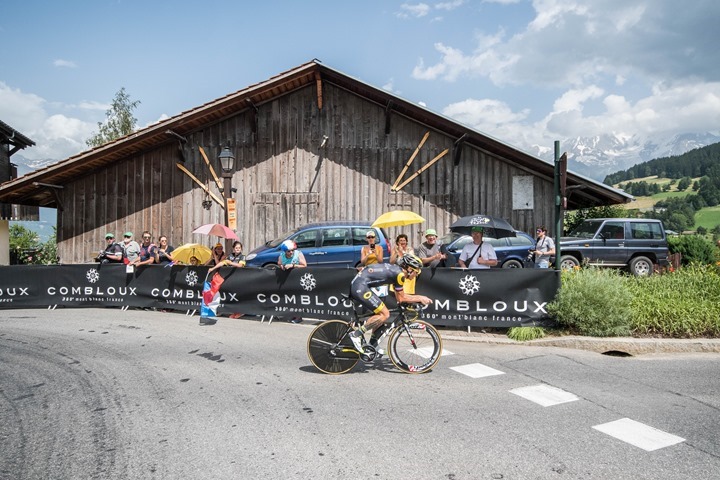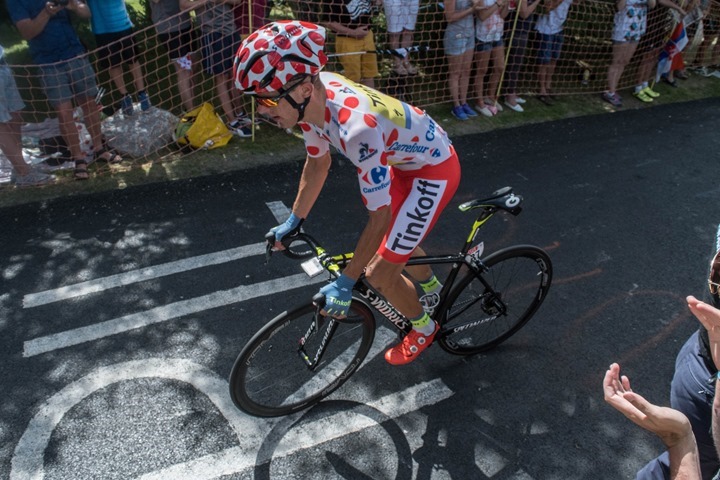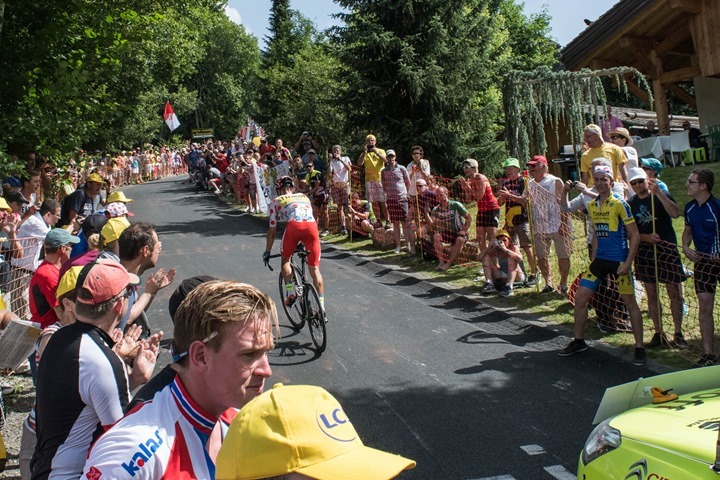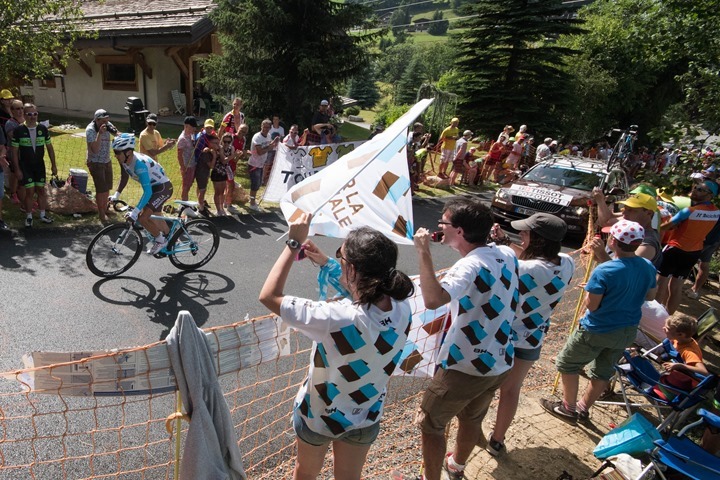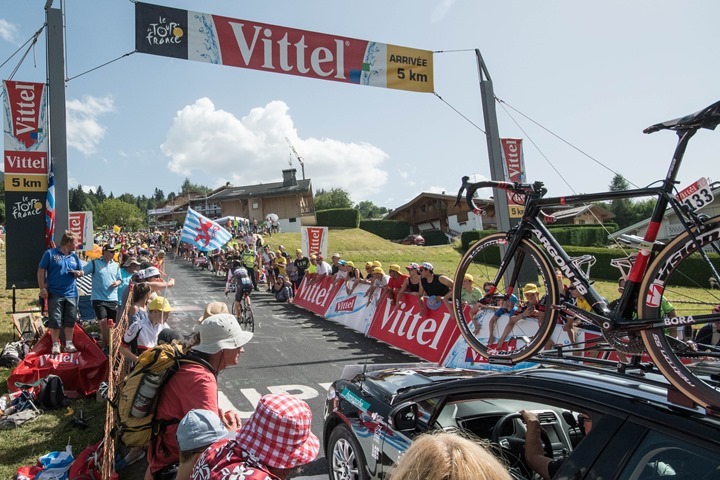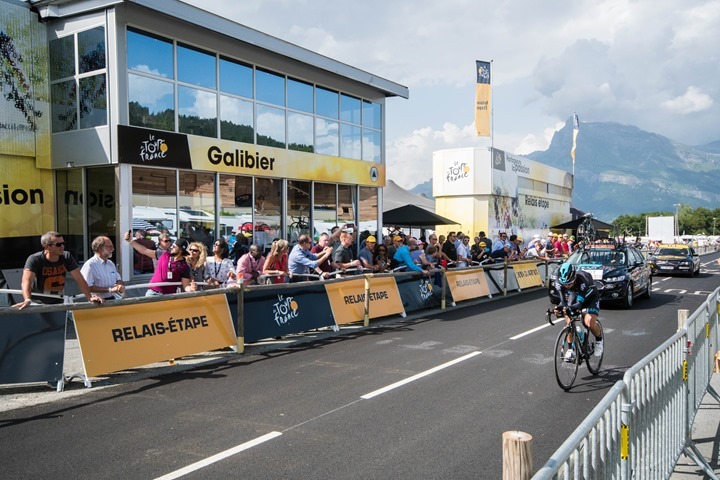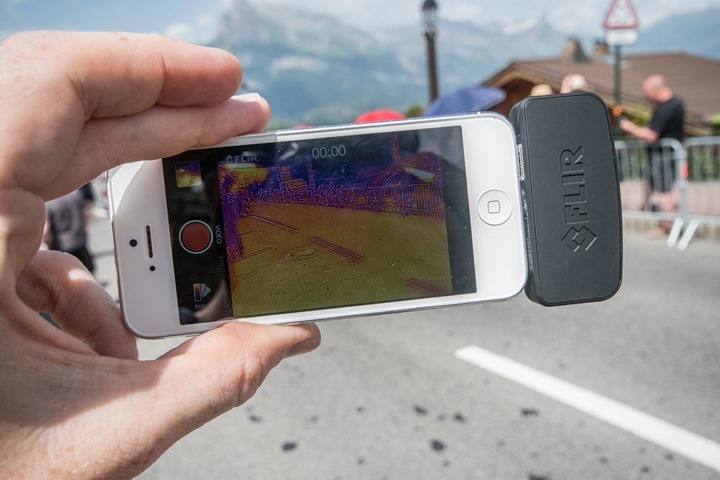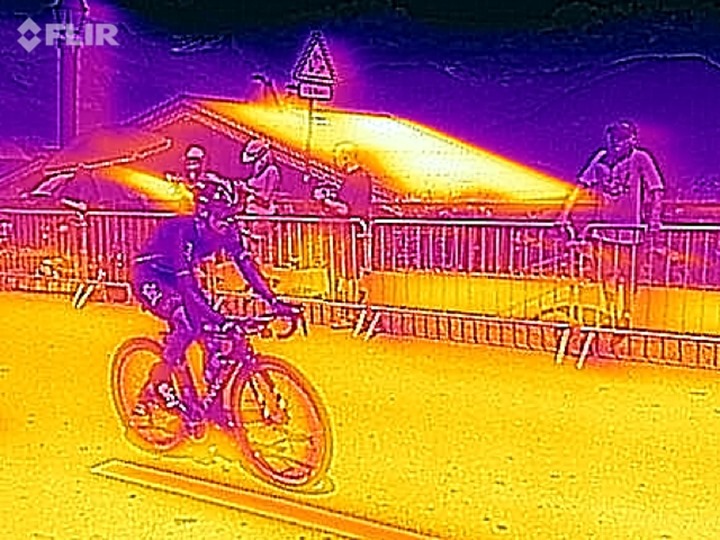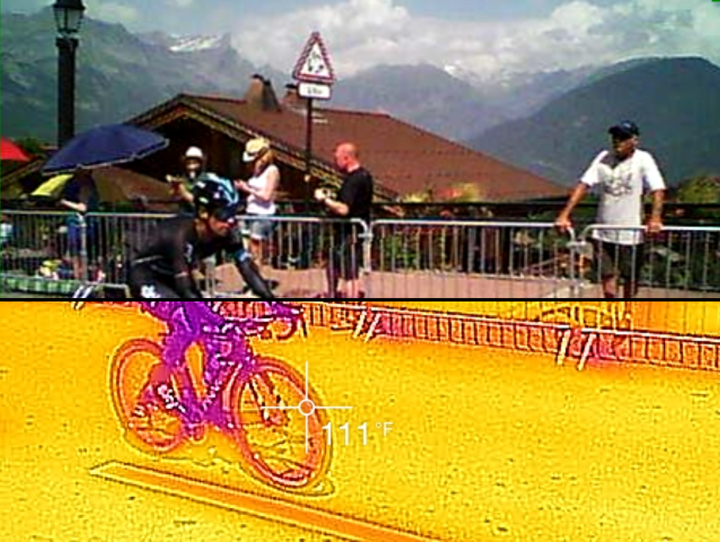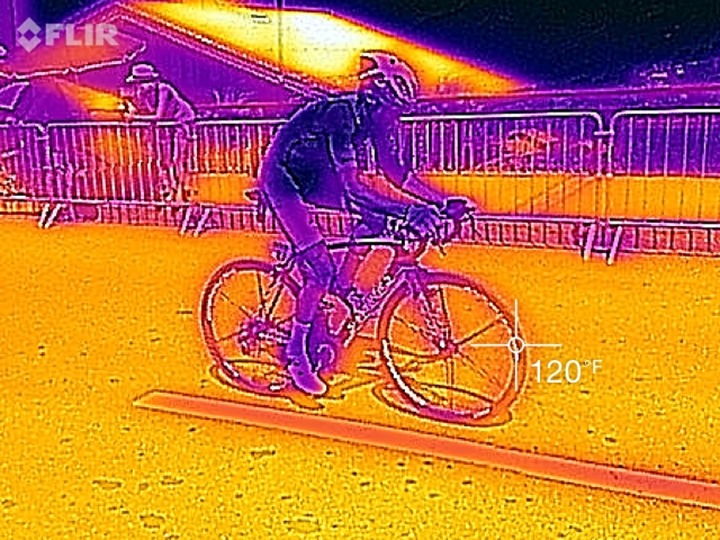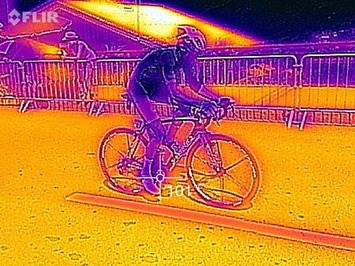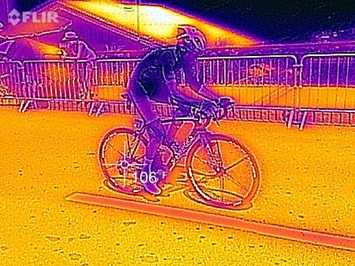While I typically get in a number of Tour de France stages each year, this year was a bit different with the arrival of our little peanut. The Girl went into labor a few hours before Le Tour began Stage 1, and thus it’s been a wee bit hectic since then.
But I was able to escape for a quick trip down to the Alps on Wednesday night to see Thursday’s Tour de France time trial stage. I’ve seen a number of time trial stages in the past, and if you can only see one stage in the Tour de France, that’s your best bang for your buck (aside from perhaps the finish in Paris). But, I cover all those tips and tricks in my TdF overview post.
As for this trip, I (and my bike) took the train down to Sallanches, where I then rode about 4mi/7km up the mountain to a small hotel. Had I realized I’d have to climb 1,500ft/450m of elevation each time I went to my hotel, I probably would have packed less laptops and camera gear. No worries, it’s like weight training for climbing.
In any event, here’s how my day went down. Note that there are plenty of other sites that cover the race details for that day, whereas what’s more timeless and interesting to me is the overall atmosphere for the race.
The Caravan:
The caravan is the sponsor parade that tracks the same route as the Tour de France, day in and day out. It goes ahead of the tour by a few hours, and is enormously popular with spectators. Heck, there were more people from the local towns out to watch the caravan than the riders. Of course with a time-trial stage, you’re more likely to get folks checking in throughout the day on the race, rather than waiting for one specific moment to pass by.
But then again, it’s logical more folks would want to be out for the caravan – since free stuff is thrown out to spectators…albeit at often high speeds. After all, the caravan still has to cover the same 150-200km long route as the riders each day.
There are some well known year after year floats within the caravan, such as the LCL lion and key sponsors like Carrefour.
Certain free items are more highly prized than others, for example the king of the mountain related gear (usually hats) from Carrefour is among the most wanted item. Also high on the list is the Skoda green-jersey (sprinter) gear:
At the same time, on a hot day like this was, the water bottles and water sprayers from Vittel can be just as desirable.
And if you’re hungry, a madeleine pastry from St. Michel is equally welcome:
Pens chucked at you at 20MPH however…not quite as much:
The whole caravan lasts about 20-30 minutes, depending on the speed it goes by. It’s dozens of sponsors long, each having about 3-8 vehicles. Each vehicle in turn has 2-5 staff on it, either driving or throwing stuff out.
You might remember a few years ago when after a stage completed, while driving out of the mountains we got stuck behind the LCL Lion float/car on regular roads for hours. Kinda funny.
Note that in general the caravan does not give out any goods in Paris during the final stage (it’s possible it does so prior to entering Paris city limits, but once they arrive in Paris, it’s merely celebratory).
Down to the start area:
With the caravan having passed, I grabbed my bike and descended down side roads to the start area to check things out for a number of hours. Given the riders go off individually at 2-3 minute intervals for the time trials, you’ve got some 6+ hours of cyclists starting consecutively, along with even more team prep time to watch.
The team buses are all arranged around town, in this case in one long street leading up to the start. Each team will set out their bikes and trainer, and riders will warm-up as their start time comes.
Here’s one of the starting lists from AG2R, showing their riders highlighted in the overall start list.
Then to the side, the exact timing and details for reach rider for the day (click to zoom above/below images):
I detailed much of the tech gear I found down there in my post yesterday, however, I did find a few other nuggets, such as the new FSA electronic shifting system that Cycling Tips detailed out the day prior. This unit was on a bike from Team Bora Argon-18.
Mostly though aside from the tech, I was just watching riders warm-up, checking out some of the different nuances that each of them have in their pre-race routines. For example – a bowl full of milky liquid while on the trainer:
Or as is far more common, conducting intervals or signing gear for fans.
In unrelated news, I give you this:
You’ll find lots of people in the cycling tech industry here, from various companies providing support. For example, 4iiii was here providing support for Etixx-Quick-Step (they’re using 4iiii power meters). Or here is one of the guys behind Veloviewer:
Heck, I even ended up providing some quick tech support for Orica-BikeExchange for something they were trying to get working in their team car to track rider data in real-time.
Heading over to the actual start itself you’ll find numerous official cars, starting with the Mavic neutral support cars. These cars provide support to all riders if/when a specific team car isn’t nearby. This is of particular interest in this time trial stage, as depending on the exact timing it’s impossible for a team to have enough team cars to accompany all riders. So sometimes they get neutral support instead of their own team car.
In the event you need an official car from the TdF, there’s an entire dealership of them located here:
Once you reach the on-deck location your support vehicle will get a sign with the riders name on it applied to the front:
This is done by Tour de France folks, and not the individual teams:
Next, as a rider you’ll head over to the UCI check station with your bike.
It’s here that the following occur:
A) Bike size is measured
B) Bike is scanned using specialized iPad case test system for motors
C) Bike is weighed
The whole process takes perhaps 60-90 seconds. You can see the iPad scanning the back wheel here. The full frame is scanned, along with both wheels:
Finally, it’s up into the starting shack to get this game underway. You’ll receive a 10-second timer/count-down, at which point it’s go-time:
From there it was a straight-away down the town’s main street for a bit of flat ground before the climbing would begin:
Ok, with the riders out on the course and my fun done in the starting village, I rode up the mountain to my first viewing locale.
Back up on the Mountain:
I picked the town of Combloux as my first point for watching riders come through, since it was an area I visited in the morning for the caravan. It took me about 30 minutes to ride there from the starting village using various side roads. It was also about 1,500ft in elevation gain.
One of the first things I noticed in this stage is just how many older folks had paper start lists. While many younger folks had connected devices to monitor the race, the more vintage generations were using the newspaper. Which to be fair was far more logical since on a hot day your phone battery burns through like nobody’s business.
The riders came through at roughly the same intervals they started at – every 2-3 minutes. Though sometimes one rider would catch up to another rider.
Each rider had a team car or two with them, and the whole group was prefaced by a single police motorcycle. Given it was a closed course, the motorcycle was really there more to warn any crossing areas that a rider was inbound.
Depending on the exact spot along the course, the crowds could be fairly strong. Though for most sections it was pretty easy to find a spot. In the towns they setup barricades, whereas in other sections it was more open roadway.
You’ll notice some riders used time trial bikes, while others used road bikes. In many cases it came down to specific power to weight ratios as to which was a better fit for a given rider.
After hanging out in Combloux for a bit, I got back on my bike and headed another 2KM up the course to a particularly steep section. It’s here I managed to catch the king of the mountain jersey wearer coming through:
This particular section was exceedingly steep, and also very tight in terms of passage. But at least while I was there the fans were fairly well behaved with nobody running alongside or ‘assisting’ or anything else.
It then got even steeper for a section just at the 5KM to go banner. This lasted a few hundred meters and was beastly steep.
Finally, as I worked my way back down I swung past this brief flat section that seemed pretty…boring. Glad I didn’t have tickets there or anything. Not that you need tickets for really anywhere except the finish line at the TdF. Just go out and find a cool spot. You’ll be closer to the action that way anyways.
Playing with heat:
Now before we wrap up, I figured I’d provide a short bit of background on the FLIR video that I uploaded to Twitter. That video I took during the stage at Combloux, of one of the riders going past. You can see it below:
Because you know you’re curious: FLIR video taken during todays Tour stage. It was baking out, but cool nonetheless. pic.twitter.com/spFLYJ8M63
— Ray Maker (@dcrainmakerblog) July 21, 2016
I used a heat detection camera made by FLIR (pretty much the leader in this space). While you can spend a lot of money for more higher end cameras, you can also buy less expensive devices made by FLIR that utilize your phone, which is what I bought. The main difference between the price points is the output resolution (i.e. how big the image is, such as almost-HD quality), as well as the sensitivity, and temperature ranges.. The model I was using can measure temperature differences as small as 0.18° F (0.1° C). My model can cover a temp range of -4°F to 248°F (-20° to 120°C). Other models can get even more detailed and wider ranges, or are designed for different distances. But for my purposes, that was more than enough.
But why was I using this? Well, about 95% pure curiosity. There’s been a lot of talk on using infrared to detect hidden motors in bikes, however the UCI themselves has downplayed that and instead gone with other magnetic based scanning technologies they say are more accurate.
I actually took a bunch of videos of various riders. Plus a handful of photos. I was curious what I’d see on a real-life Tour de France day out in the heat. Here’s one image:
I can actually use the app and look back at any given image in a split-screen function to show me the original non-FLIR image that was captured:
Now here’s why I suspect that UCI has said that infrared just isn’t the right tech for measuring this. Let me add in the temperature of just the front rim on another rider (120*F/48*C):
And here’s the temperature of the bottom bracket area at 101*F (38*F), and the rear hub at 106*F (41*C):
As you can see, on a typical summer day – these temperatures are extremely high. More than enough to likely cover up any tiny hidden motor in the bike frame. That also doesn’t mention the fact that actually getting readings of a rider mid-ride wouldn’t be easy. In my case I only had a single cyclist at a time to worry about, but the cyclist is only in front of you for about 1.5 seconds long (at usable distances for the resolution of these systems). Not very long at all. Sure you could run a moto next to the guy, but then the rider will easily see that and shut it off. Drones are also possible, but pretty obvious.
Next, in a normal non-TT stage there’s a lot of ‘stuff’ on the roadway blocking views. Team cars, official motos, media motos, fans, other cyclists, etc… It’s just not as clean and simple as some TV programs would have you believe.
Still, I think it’s interesting – and perhaps some day the tech will make sense (i.e. a very cold stage with little other stuff around). But I’d be hesitant to say that it could be applied in any consistently reliable manner in typical summer day stage in the Tour de France.
–
If you’re looking for all my past Tour de France posts, check out this link here. Also, I have my Tour de France spectating guide and tips here. Enjoy!
(Photography side note: Everything in this post was taken with a Nikon D500 DX DSLR, an 18-55 lens, and a Sigma 10-20mm lens. I didn’t have space for a telephoto lens in my backpack when all packing was said and done. There’s a handful of iPhone photos in here, easily identified as the name of the photo starts with a date.)
























